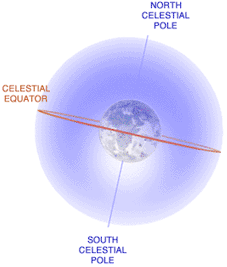Today, at 5:18 p.m. EDT, the sun will cross the celestial equator in the constellation Virgo. Often called the autumnal equinox, I prefer to name it by month, since neither South Florida, nor the Southern Hemisphere, experiences autumn in September. (I must admit, though, that the phrase autumnal equinox has a much more mellifluous sound, and is much more satisfying to say, than September equinox. Tennyson, though not an astronomer, would probably agree.)

On this day, the sun rises directly in the west, and sets directly in the east. Tomorrow, the sun will rise and set slightly to the south of west. Yesterday, it rose and set slightly to the north of west. This is NOT the day of the year when day and night are the same length, despite the opinions of many learned people (geographers included!) to the contrary. The reason for this is that sunrise and sunset are defined by the edges of the sun’s disk first appearing (at sunrise) and last disappearing (at sunset). No matter where you are on Earth, it takes some amount of time for the sun to rise, although that time varies with the angle of the sun’s path and your position relative to the equator.
So, say sunrise occurs at 7:09 a.m., as it does in Boca Raton today. That means that the leading edge of the sun’s disk can be seen at 7:09 a.m. The center of the sun will be visible a minute or two later, and the full disk won’t clear the horizon for another few minutes more. The same process happens in reverse at sunset: it takes a few minutes for the sun to disappear after its leading edge hits the horizon, and the sun hasn’t officially set until it can no longer be seen. That is, at 7:17 p.m. (You can look up sunrise and sunset times for your location at the US Naval Observatory’s website. Remember to correct for daylight saving time, which will be in force in most locations at this time of year.)
Got it? Good. Now add in another wrinkle. In the morning, you see the leading edge of the sun’s disk BEFORE it appears over the horizon. And at sunset, you see the trailing edge of the disk AFTER it has already “physically” disappeared behind the curve of the earth (assuming you have an unobstructed view of each horizon). But, because of the refraction of the sun’s rays caused by traveling through miles and miles of Earth’s atmosphere, the apparent position of the sun and its astronomical position are not in sync. Sunrise and sunset both occur when the sun is “actually” about one sun diameter below the horizon.
So, because the sun, unlike the “fixed stars,” is not a point source of light, we have two separate effects that add up to the difference between “equal night and day” and the day the sun crosses the celestial equator (the equinox).
Here is some non-garbage from Wikipedia about the phenomenon:
Due to Earth’s axial tilt, whenever and wherever sunset occurs, sunset is always to the northwest from the March equinox to the September equinox, and to the southwest from the September equinox to the March equinox. Sunsets occur precisely due west on the equinoxes, and the duration of day and night are approximately equal on the equinoxes for all viewers on Earth (precisely 12 hours if measured from the geometric (unrefracted) centre of the sun).
As sunrise and sunset are calculated from the leading and trailing edges of the sun, and not the centre, the duration of “day” is slightly longer than “night”. Further, because the light from the sun is bent by the atmospheric refraction, the sun is still visible after it is geometrically below the horizon.
You have to read it carefully to notice it: day and night are NOT equal on the equinox, except by definition. They would be equal if the sun were a point source of light, or if the center of the disc rose before the edges, but it isn’t, and it doesn’t. Man does not live by definition alone.
In Boca Raton, where I live, the day with equal lengths of night and day is September 27 this year, only 5 days after the equinox.


1 thought on “September Equinox”